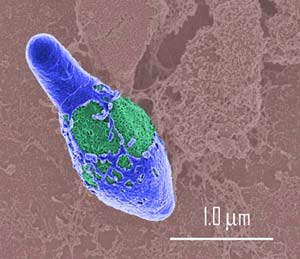Italian scientists have discovered a new blood test method that detects hidden signs of tuberculosis more effectively than traditional skin testing methods.
 |
| Bacillus (Clostridium) – one of the latent bacteria associated with tuberculosis. |
The team of scientists from the University of Modena and Reggio Emilia in Italy analyzed skin test samples from a patient who had the disease but received inaccurate results. Two blood tests provided more accurate outcomes.
This blood testing method allows doctors to identify individuals with latent tuberculosis who have not yet developed respiratory symptoms, enabling timely treatment that eradicates the bacteria at its source.
Tuberculosis is a contagious disease that transmits bacteria or bacilli to others through coughing, sneezing, talking, and saliva. The most susceptible groups to tuberculosis infection include newborns, children, the elderly, and those living with HIV-positive patients or drug addicts.
According to statistics from the World Health Organization, 9 million people worldwide are diagnosed with tuberculosis each year, and 2 million die from this disease. The World Health Organization warns that the number of cases has reached alarming levels in Africa, where tuberculosis co-infection with HIV leads to fatalities.
Additionally, half of the remaining tuberculosis cases are found in countries such as Bangladesh, China, India, Indonesia, and Pakistan.
Dr. Luca Richeldi, the lead researcher, informed reporters from The Lancet medical journal: “To control and limit tuberculosis in areas that are not heavily infected, accurate and sensitive testing methods are essential.”
Therefore, the use of blood tests can complement or replace skin tests to detect early signs of latent tuberculosis. However, the choice of testing method depends on the number of individuals diagnosed, the purpose of the testing, and the available medical conditions.
Ngoc Huyen

















































